- Home
- Antonia Fraser
The Gunpowder Plot Page 16
The Gunpowder Plot Read online
Page 16
Although still without a detailed plan, one of the Plotters now received a lucky promotion. On 9 June Thomas Percy was appointed a Gentleman Pensioner – one of fifty special bodyguards – by his kinsman and patron the Earl of Northumberland, who commanded them.11 This meant that Percy had an unassailable reason to establish himself with a London base. The conspirators were moving closer to some kind of proper organisation. A small dwelling in the precincts of Westminster – more of an apartment than a house – was chosen.* In May 1604 the house belonged to John Whynniard, by right of his office as Keeper of the King’s Wardrobe, but it was leased to a distinguished recusant, the antiquarian Henry Ferrers, who owned Baddesley Clinton, that house in Warwickshire where Anne Vaux had formerly entertained the Jesuits. Here Guido was installed as a kind of caretaker, passing himself off as one John Johnson, servant to Thomas Percy.
Gentlemen Pensioners were supposed, as a matter of the law, to swear the Oath of Supremacy, which sincere Catholics found so uncomfortable to take because, by implication, it denied the spiritual authority of the Pope. But Lord Northumberland did not impose the oath upon his cousin Percy, whom he supposed to be a Catholic. It was a gesture, rather like Father Gerard’s coincidental celebration of Mass, which was to have most unfortunate consequences for Northumberland himself. In the hectic atmosphere of post-Plot accusations, the omission, as we shall see, was construed in a sinister light. But in the summer of 1604, when the Plot was in its very earliest stages, Northumberland was doing no more than behaving in his usual generous manner towards Percy.
As that summer wore on, events did nothing to persuade the conspirators to abandon their lethal project. Until Parliament was formally adjourned on 7 July, to meet again on 7 February 1605, anti-Catholic legislation continued to go through. Priests were put to death including Father John Sugar, who, with his servant Robert Grissold, was executed at Lancaster shortly after the adjournment of Parliament. The priest died heroically, confident of his soul’s salvation as his body was cut into pieces. Pointing to the sun he remarked, ‘I shall shortly be above yon fellow,’ and later, ‘I shall have a sharp dinner, yet I trust in Jesus Christ I shall have a most sweet supper.’12
The persecution was not likely to abate, for in mid-September King James issued a commission to Lord Ellesmere to preside over a committee of Privy Councillors ‘to exterminate’ Jesuits, other priests and ‘divers other corrupt persons employed under the colour of religion’ to withdraw his subjects from their allegiance. As to the laymen, by the end of the year the recusant fines were back in full force, and would shortly net three thousand pounds. ‘Ancient’ recusants complained of the new severity, but without success. It may well be that arrears of the fines already remitted were also sought, bringing an additional hardship (and injustice). Although the point has been debated, at least one leading recusant, Sir Thomas Tresham, was charged with paying arrears. His accounts reveal that the charge was made, following a year of paying nothing, thanks to the ‘relief of 1603. In fact the so-called relief cost Sir Thomas nearly £200 in bribes; that was the amount which he had dispensed that summer as a sweetener, in order to secure ‘the pardon concerning recusancy money’ – of which £120 had gone to Sir Edward Coke.13
Even the long-awaited visit of the Constable of Castile in August was nothing more than a ceremonial interlude of banquets and processions which left behind an Anglo-Spanish Treaty – but absolutely no promise of toleration. Papists who listened to this magnificent peace being proclaimed at Cheapside by a herald on 19 August may have wondered at the secret agenda which lay behind it. But there was none. It was simply the conclusion of years of fighting between nations, a conclusion which suited the great men concerned. Owen and Stanley in Flanders had been right when they warned Tom Wintour that the peace was too precious to all parties to be disturbed by any other enterprise.
The conspirators (with the exception of Guido) left London some time after their initial pact. The adjournment of the government from the targeted ‘Parliament House’ gave them, as they thought, until early February to get their plans in place. They went to the country, to those various family houses which made up a stately map of recusancy. They left, having decided on a course of action which would cause them, in the late twentieth century, to be described as terrorists. The words terrorist and terrorism were not then in use. Nevertheless the Gunpowder Plot does satisfy a modern definition of terrorism: ‘the weapon of the weak, pretending to be strong’.14
Like the Irish men and women involved in the Dublin uprising of 1916, they saw themselves as a small band, whose actions would lead to great change.* The Plotters also believed that they had left no peaceable and quiet way untried, as Catesby put it to Wintour. In face of continuous persecution, theirs was the violence of last resort. Furthermore, they took on board what Bakunin, the nineteenth-century Russian anarchist, would call ‘the propaganda of the deed’.† That is to say, the blowing up of Parliament by gunpowder was to be a deliberately sensational and indeed outrageous action. In this way not only the government but the outside world would be alerted to sufferings which were in themselves outrageous.
Of course Elizabethan and Jacobean state justice itself was conducted along these same lines. When the public gazed with morbid fascination at the disembowelment of living Catholic priests, they were supposed to draw the conclusion that the victims must have deserved such cruel treatment. In other words, the crime which had taken place must have fitted the appalling punishment which was taking place. Catesby’s showman instinct to blow up the place where all the mischief had taken place had something of the same propagandist logic.
Violent opposition in the historical period under consideration was conducted not by terrorism but by tyrannicide, both methods being justified by their proponents by doctrines of the right to resistance. The demerits (or merits) of tyrannicide had been debated for centuries. It is important to realise that, in the course of the debate, tyrannicide – to bring about the overthrow of an existing government – had never been condemned outright by the Catholic Church. On the contrary, there was a long tradition of discussion about whether an evil ruler could be removed. (That begged the question, naturally, of exactly what constituted an evil ruler.) In the thirteenth century St Thomas Aquinas, the doctrinal Father of the Church, had held that the overthrow of a tyrannical government was not necessarily an act of sedition, unless the community concerned suffered more from the overthrow than from the previous tyranny. In the sixteenth century, not only Catholics but Protestant Huguenots discussed it in their polemical literature. The discussion spilled from theology into art, where the bloodthirsty description of (holy) Judith slaying (unholy and tyrannical) Holofernes was a significantly popular one.15
The furthest position on such an overthrow was that taken by the Spanish Jesuit Mariana in De Rege et Regis Institutione, published in 1599. Written in the form of a dialogue, Mariana answered the question ‘Whether it may be permissible to oppose a tyrant?’ in the affirmative. There could be ‘no doubt’ that the people were able to call a king to account, since there was a contractual element in their relationship. Ideally a public meeting should be held, but if that proved impossible a tyrant might be destroyed by ‘anyone who is inclined to heed the prayers of the people’, and the assassin ‘can hardly be said to have acted wrongly’ by serving as an instrument of justice.16
This notorious passage aroused the frenzy of Protestants, and was the basis of accusations about ‘Queen-killing’ and ‘King-killing’ Jesuit policy in the English state trials of 1606. All one can say with certainty is that on the edges of Catholic political thinking what one authority has called ‘an ultimate right of tyrannicide’ was reserved for the oppressed, based on an idea of a broken contract. (It is an ultimate right which has after all been reserved by many of those who see themselves as oppressed throughout history.) Against this ultimate theoretical right, at the turn of the sixteenth century lay the heavy weight of practice, under which lawful governments could in fac
t expect the obedience of their citizens, whatever their religious persuasion. This was a point of view expressed vividly by Erasmus in 1530 in a book designed for the instruction of the young. ‘Even if the Turk (heaven forbid!) should rule over us,’ he wrote, ‘we would be committing a sin if we were to deny him the respect due to Caesar.’17
The distinction between a lawful and an unlawful ruler was crucial. After that, debate could still rage over what constituted such a ruler (debates which may be compared to modern arguments about what constitutes a democratically elected government in considering the legality of the coup which overturns it). However, to many English Catholics, led by priests such as Father Garnet, there was a vital difference between Queen Elizabeth and King James. The former had been a bastard by Catholic rules, had usurped the throne rightly belonging to the Catholic Mary Queen of Scots, and had been subject to a bull of excommunication by the Pope. None of these blemishes marred King James. He was legitimate and he was not a usurper, having inherited the throne as next in blood. Above all he had never been excommunicated – thanks to that cleverness with which he handled the Papacy while still in Scotland. What was more, since James had never been a Catholic, he could hardly be accused of apostasy. Father Garnet himself would make a careful distinction between King James and the Catholic backsliders, those who reneged on the religion into which they had been born.18
Thus the Plotters were going against the profoundly held loyalties of many of their co-religionists when they decided to remove ‘a king who had succeeded lawfully to his kingdom’. And yet there was enough in the contemporary Catholic political literature on the overthrowing of tyrants – which they had probably not read themselves, but had simply imbibed at second or third hand – to convince men of their particular temperament, frustrated men (‘Shall we always talk and do nothing?’ Percy had asked), that their course was virtuous.19
It was Father Tesimond who commented that such gentlemen as these would not have staked their whole future on a conspiracy ‘if they had not been convinced in their utmost consciences that they could do so without offence to God’. The conspirators ordered for their endeavour special swords of Spanish steel, their blades richly engraved with scenes from the life of Jesus Christ; these swords would bear the legend, ‘The Passion of Christ’.20 In their own estimation, these men were not assassins; they were fighters in a holy cause (which they found to be an absolutely different concept).
For all the wild language of horror after the Plot’s discovery – one Biblical comparison was made to the ‘Passover’ massacre of the first-born of Egypt – both the killing of rulers and the killing of the innocent were endemic in the times in which Catesby and his companions lived.*21 But if the Plotters’ consciences were at ease with the killing of rulers, there is evidence that they were greatly anguished over the killing of the innocent. Blowing up the King was one thing, and the Royal Family – his wife and heirs – another. But the extinction of the Parliament house by gunpowder at the Opening would inevitably result in many more deaths than that.
It was the possible deaths of Catholic peers which aroused this fierce anxiety. These conspirators were terrorists, but it is too simple a view of human nature to suppose that they were immunised from all weakness or regret. Father Garnet later described Catesby’s split mind. On the one hand he planned to save ‘all the noble men whom he did respect’ and on the other he was determined not to spare his own son if he were there ‘rather than in any sort the secret should be discovered’. For these men to envisage the deaths of co-religionists who had borne the heat and burden of the day might prove to be ‘cruel necessity’. But it could never be a light decision.
In general, Parliament had been responsible for anti-Catholic legislation: hence the choice of the site for the explosion. The prospect of the death of Robert Cecil, a member of the House of Lords since the granting of his first peerage in May 1603, could no doubt be accepted with equanimity. But was the devout young Lord Montague to die? He had spoken up bravely on behalf of ‘the religion of our fathers’ in the House of Lords this very summer in a bitter attack on the Act against recusants, and as a result had spent four days in the Fleet prison.22 Was he to be sacrificed? Then there were the two prominent peers who were married to the daughters of Sir Thomas Tresham (Catesby’s first cousins). Lord Stourton, husband of Frances, was some twenty years older than Catesby, but the men were close friends. Lord Monteagle, husband of Elizabeth, belonged to the Catesby generation – he was born in 1575 – and he had been involved like Catesby, Jack Wright and Tom Wintour in the Essex Rising. Wintour now acted as his secretary.
In the light of what happened later, there is a question mark, to say the least of it, over Monteagle’s subsequent commitment to Catholicism. He had in fact privately made a grovelling submission to Cecil while in the Tower in April 1601. He had also described himself as a born-again Protestant in a letter to the King, in order to establish his right as Lord Monteagle (it was a title that came through his mother) so that he could sit in the House of Lords in the lifetime of his father, Lord Morley.23 But these kinds of ambiguities and compromises were far from uncommon at the time, especially at court, where Monteagle had an appointment in the household of Queen Anne.
In the summer of 1604 Monteagle would have been seen as a member of the recusant family ring, not only through his Tresham marriage, but through his brother-in-law Thomas Habington (his sister Mary’s husband). Habington had been involved in one of the plots to free Mary Queen of Scots and had spent six years in the Tower as a result. In the recent Parliamentary election, Habington had been among the prominent Worcestershire recusants who supported a Catholic candidate, Sir Edward Harewell. Although it was not yet technically illegal for a Catholic to sit in Parliament if he swore the Oath of Supremacy, an armed guard on the gates of Worcester against Harewell’s supporters had proved an effective if brutal deterrent.24 Habington’s house, Hindlip, like neighbouring Huddington, was another important recusant centre, a maze of hiding-places where priests could linger – it was hoped – for months with impunity.
Was Monteagle, was Stourton, to die? And finally, what of the great Earl of Northumberland, Thomas Percy’s patron?
On such an agonising question as the death of the innocent the doctrine of the Catholic Church was far more clearly established than over the murky question of tyrannicide. It was a matter of what was called ‘double-effect’. A single action might have two quite separate effects. There were, however, three conditions which had to be fulfilled for the double-effect principle to operate. First of all, the good effect had to be disproportionately important compared to the bad effect; secondly, the bad – harmful – effect had to be involuntary, rather than in any way desired; thirdly, both good and bad effects had to be so closely linked as to be brought about more or less simultaneously*25
The Powder Treason, as planned by Catesby, easily fulfilled the second and third conditions of the double-effect principle. No ‘innocent’ deaths were desired – absolutely to the contrary – and yet they would certainly be brought about simultaneously with those of the ‘guilty’ in the general combustion. The question of the fulfilment of the first condition – was the enterprise of sufficient worth to ‘countervail’ these innocent deaths? – entirely depended, as in all terrorist actions, on the standpoint of the individuals involved. Nevertheless, the theological clarity of the issue did not prevent each new conspirator, as he joined the band, from suffering the same doubts and anguish.
The Plotters returned to London in early October. Around this time, a sixth conspirator, Robert Keyes, was admitted to their ranks. They needed someone to take charge of Catesby’s house in Lambeth, where it was intended that the gunpowder and other necessary stores such as firewood should be kept for the time being. Keyes was nearly forty in 1604, a ‘trusty and honest man’, tall and red-bearded; he too, like Guy Fawkes, could be relied on to show courage in extremis. His father had been the Protestant Rector of Staveley in North Derbyshire, but Keyes
had clearly always favoured the religion of his mother, who came from the well-known recusant family of Tyrrwhitt in Lincolnshire.26
From the point of view of the Powder Treason, it was important that Keyes’ first cousin, the beautiful Elizabeth Tyrrwhitt, was married to a wealthy young Catholic with money and horses to spare, Ambrose Rookwood of Coldham Hall in Suffolk. This golden couple was thus brought within the general orbit of the conspirators. In the autumn of 1604 it was Ambrose Rookwood who was asked to acquire some gunpowder by Catesby and bring it to the Lambeth house. At this point, the acquisition of the gunpowder was presented as merely being for the use of the English regiment in Spanish service in Flanders, no longer of course an illegal operation, thanks to the Anglo-Spanish Treaty.27
Keyes was not particularly well off. His wife Christiana, a widow when he married her, was a clever woman who acted as governess to the children of Lord Mordaunt at Drayton in Northamptonshire. Keyes received horses and other amenities in return for his wife’s teaching services. Mordaunt was another prominent Catholic peer and his safety in Parliament would obviously be a matter of much concern to Keyes. As for Drayton, Cecil described the great house as ‘a receptacle of most dangerous persons’, meaning ‘the foreign seminaries’ he believed to flock there. Nevertheless King James was happy to stay at Drayton for the hunting near by, good sport glossing over a multitude of Popish sins: an example of the doublethink which existed in court circles on the subject of grand Papists.28

 Warrior Queens
Warrior Queens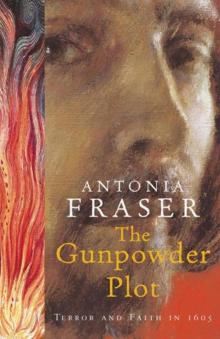 The Gunpowder Plot
The Gunpowder Plot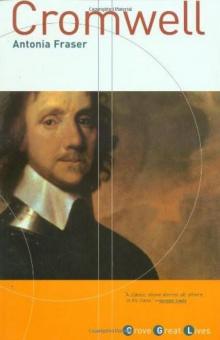 Cromwell
Cromwell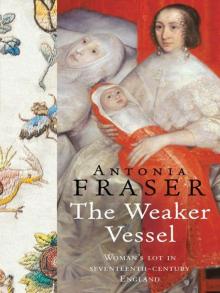 The Weaker Vessel: Women's Lot in Seventeenth-Century England
The Weaker Vessel: Women's Lot in Seventeenth-Century England Marie Antoinette: The Journey
Marie Antoinette: The Journey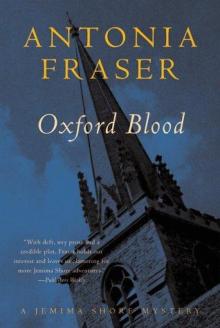 Oxford Blood
Oxford Blood Your Royal Hostage
Your Royal Hostage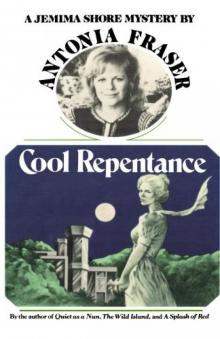 Cool Repentance
Cool Repentance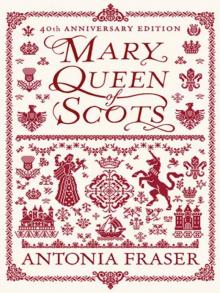 Mary Queen of Scots
Mary Queen of Scots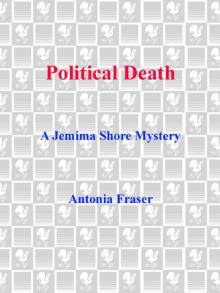 Political Death
Political Death Royal Charles: Charles II and the Restoration
Royal Charles: Charles II and the Restoration My History: A Memoir of Growing Up
My History: A Memoir of Growing Up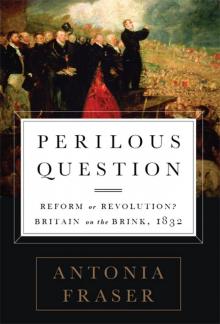 Perilous Question: Reform or Revolution? Britain on the Brink, 1832
Perilous Question: Reform or Revolution? Britain on the Brink, 1832 Jemima Shore at the Sunny Grave
Jemima Shore at the Sunny Grave A Splash of Red
A Splash of Red Must You Go?: My Life With Harold Pinter
Must You Go?: My Life With Harold Pinter Love and Louis XIV: The Women in the Life of the Sun King
Love and Louis XIV: The Women in the Life of the Sun King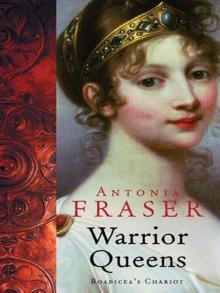 The Warrior Queens
The Warrior Queens The Wild Island
The Wild Island Quiet as a Nun
Quiet as a Nun Perilous Question
Perilous Question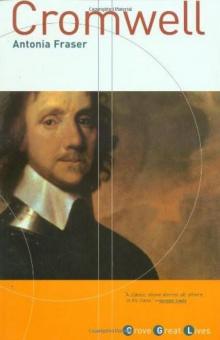 Cromwell, the Lord Protector
Cromwell, the Lord Protector Gunpowder Plots
Gunpowder Plots The Wild Island - Jemima Shore 02
The Wild Island - Jemima Shore 02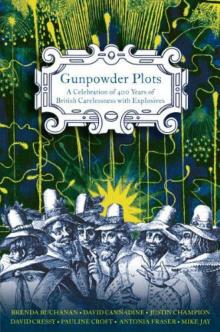 Gunpowder Plots: A Celebration of 400 Years of Bonfire Night
Gunpowder Plots: A Celebration of 400 Years of Bonfire Night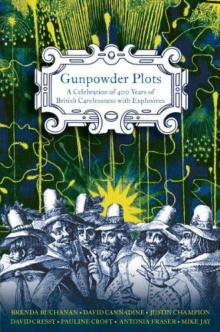 Gunpowder Plots_A Celebration of 400 Years of Bonfire Night
Gunpowder Plots_A Celebration of 400 Years of Bonfire Night Marie Antoinette
Marie Antoinette Must You Go?
Must You Go? My History
My History